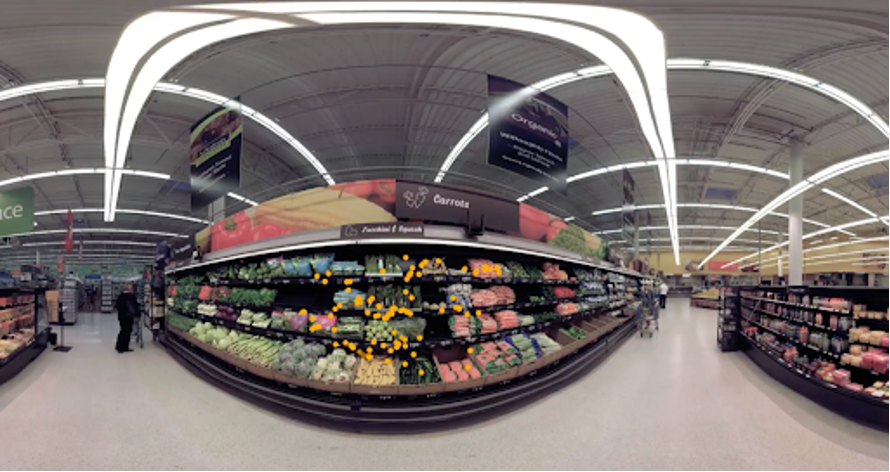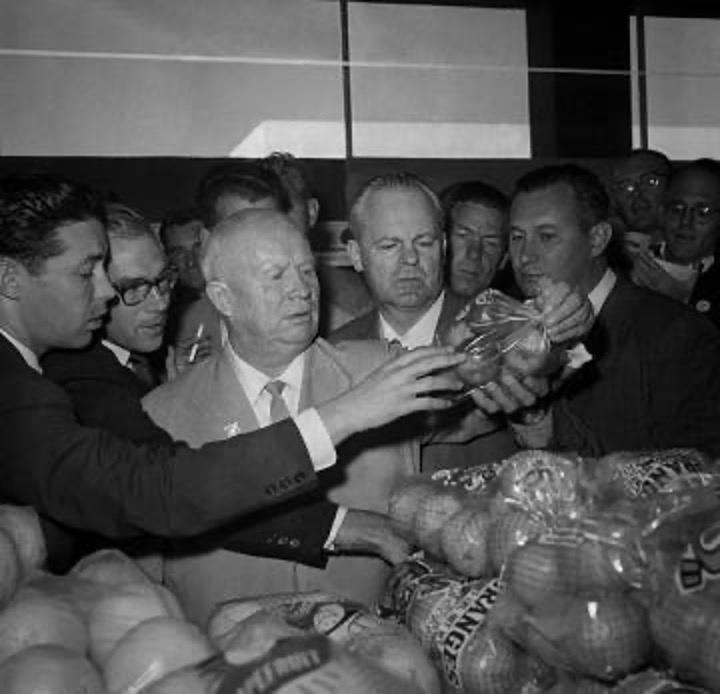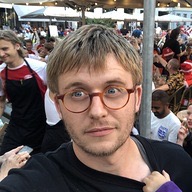
Filter by Columns


“Shopping in the Metamarket” examines how virtual reality is being used to build on techniques of behavioural economics in shopping, examines the rules we are taught about how to behave when shopping, and asks what further behaviour we will need to learn as shopping moves into the metaverse.
“Let us begin at Central Market on North Lamar Avenue, Austin, Texas. Stores like Central Market, as large as two or even three football fields, are familiar to Americans, or at least to affluent, middle-class Americans. They are based on economies of scale and on a single, simple promise addressed to the customer: Everything you can conceivably want, in the way of things to eat and drink, is here, and more. You need go nowhere else.
The ‘and more’ is important. The cornucopia, the mythological horn of plenty, disgorges a copia, a torrent of goods, that is more than anyone can consume. Fundamental to Central Market and stores like it is the cornucopian promise that what is on offer is inexhaustible not only in sheer mass but in variety too: variety of flavour and colour and size, variety of origin, variety of method of cultivation. If the effect is dizzying, that is part of the plan.”
J.M. Coetzee, “Meat Country”
It was the highlight of his visit. On September 21, 1959 Nikita Khrushchev walked into a supermarket in San Francisco. Some accounts record it as a Safeway, others say a Quality Foods. Either way, there are photos of him smiling and lifting a cantaloupe from a well-stocked display, peering with admiration at a plastic bag filled with large apples. He was impressed. Of everywhere he visited in the US, Khrushchev liked San Francisco the best. On his return to Russia, he announced his intention to transform the port city of Vladivostok into the San Francisco of the Soviet Union.

It can be difficult for us to imagine what an impression the supermarket would have made when it was first introduced. There were advertising campaigns in which cars were driven down the aisles of these new stores, showcasing their width. Today, we like to know where our food comes from, to display the name of the orchard which provides our fruit, the farmhouse which has slaughtered our meat. Back then, the appeal was simpler: look how many goods we’ve collected in one place, a whole aisle for frozen meat, pyramids of preserved fruit, more produce than anyone could ever consume. In 2019, a twitter user ironically celebrated the lack of choice at a supermarket in Cuba – shelves piled high with the exact same product – but to people who have known food shortages, the impressive thing about these clean, well-lit places would not have been their variety of choice so much as their sheer abundance.
As much as the supermarket provides us with goods, it is also a laboratory of capitalism, somewhere we are trained in the vocabulary of shopping. In 1957, two years before Khrushchev stopped off at Safeways, Vince Packard published a book called The Hidden Persuaders, about the tricks companies use to make us buy their products. He wrote:
“Housewives typically fall into a hypnoidal trance when they get into a supermarket… The main cause of the trance is that the supermarket is packed with products that in former years would have been items that only kings and queens could afford, and here in this fairyland they were available.”
The largest supermarket today – and the largest private employer in the world – is Walmart, with over 4,000 stores in the US and more than 2.2 million employees worldwide. In 2019, they partnered with Strivr, a company who specialises in Virtual Reality training. With Strivr’s Virtual Reality headsets, Walmart will now train their employees in hard skills (how to efficiently stack shelves and operate heavy machinery) as well as soft skills like interacting with customers and dealing with discrimination in the workplace.

And it isn’t just the staff whose behaviour will be monitored and adjusted with the benefit of Virtual Reality. Strivr have also sent “customers” around stores wearing VR headsets which track their eye movements. Depending on where they look, Walmart will know where best to place their products. They will then also be able to sell “prime” locations to brands who want to maximise the exposure of their goods. Today, our pioneering technology is being used to cultivate the same “hypnoidal trance” Vince Packard wrote about in 1957.
So, will Virtual Reality change how we shop? For the most part, it is being used to further a technique supermarkets have been developing for years: finding ways to put customers in front of products they didn’t think they wanted. One tried and tested method is to put simple, everyday necessities like milk and toilet paper at the back of the supermarket, so that we need to walk past a whole variety of goods to get to these basics. Another technique is to reposition displays, trying to create deliberately disorientating routes through the store, helping to expose us to as many potential purchases as possible. In this way, the supermarket is already something of a virtual reality, a carefully curated experience with pre-established rules. We barely notice them, but these schemes form the invisible backdrop to our experience of grocery shopping. Without needing to be explicitly instructed, we know its grammar and follow its rules instinctively; we intuit that the items at eye level are more attractive than the basics on the bottom rung.
This logic is itself a product. Brands like Unilever pay for a display fridge at the end of an aisle: the prized real estate. With Virtual Reality, Strivr and the other companies want to extend this further, to create an even more exact science about how to turn users’ attention to greater purchases.
Today, our pioneering technology is being used to cultivate the same “hypnoidal trance” Vince Packard wrote about in 1957.
That is one way that virtual reality is deciding the future of shopping. But what about the other forthcoming VR experiment: the metaverse? Brands are already building virtual stores in which users can browse, picking outfits for their digital avatar. According to some digital evangelists, programs like Unreal’s metahuman will create a situation whereby “Our physical selves and our digital selves will merge into one representation of our taste, our aesthetics, and our creativity.” This hyper-realistic person would be able to model how we want to appear, so that we could try out different “looks” ahead of time. However, our physical self and our digital self will not be identical: we might decide to adopt a differently adorned avatar playing a game than the one we assume for a conference meeting. Our identity is to become “decentralised”, with different stores, multiple worlds and various roles each requiring their own adornments, purchases and currencies in the many “city-states” of the metaverse.
The Polish sci-fi author Stasislaw Lem in his 1964 book SUMMA Technologae was already able to foresee some of the advantages and the drawbacks of a shared virtual reality universe. Describing what was then a purely hypothetical technology, he noted its possibilities as a tool for training for practical, hard skills.
“Phantomatics can help us create training and educational situations of the highest caliber. It can be used to train people for any profession: medics, pilots, engineers. There is no threat of a plane crash, a surgical accident, or a catastrophe brought on by a miscalculated building project.”
The difficulty, according to Lem, comes when we want to enact our fantasies. In a shared virtual reality like the metaverse (what he called “phantomatics”) we would remain constrained by societal rules. “To be crowned a king or receive the Pope’s emissaries,” he writes “one has to be familiar with the whole court protocol.” In other words, if we are going to inhabit a common artificial space, we need to know its customs. More than the splendour of its decoration, this is what will determine the success of the experiment. It is perhaps for this reason that VR has taken a keen interest in training not just for hard skills like performing risky surgery, but also for interpersonal skills like treating your colleagues respectfully, public speaking, or firing senior staff members.
But the line between hard and soft skills can get blurred. Studies are underway which examine the consequences of providing workers with a “virtual peer” who will perform a given task (let’s say stacking shelves) just a little bit faster than them. According to the studies, this has a proven economic benefit. Those attempting to accomplish their task will do so just a little bit faster to match the speed of their virtual colleague.
Virtual reality, then, could soon be one method of instructing the worker stacking shelves at the supermarket as well the customer walking the aisles in the behaviour desired by the owner of the physical or virtual store. But this logic can apply to other spaces in the metaverse too and begin to train our behaviour more generally: as each supermarket might differently rearrange its aisles to disorientate its shoppers, the competing spaces of the metaverse will be able to build their own protocols.
In the medieval court, one way of identifying social status was to use colours and symbols. In the digital world NFTs are already, among other things, a way of displaying social status, a digital method for showing that you are not of the lowest rung of society. In the place of silk or fur, we adorn our avatars with new “prized” materials. The supermarket sought to stun its customers with economies of scale, to show that all this and more could be yours, but our early metamarkets are doing the opposite. Rather than the abundance of the supermarket, we get the digital scarcity of the blockchain and make a product of our basic feudal exclusion from these artificial realms: look at everything you cannot have, the clothes you cannot wear, the zones you cannot enter.

Peter Frederick Matthews is a writer living in Berlin. His work can be found in the TLS, Dirt Newsletter, Berlin Quarterly, among other publications.
Twitter: @P_F_Matthews